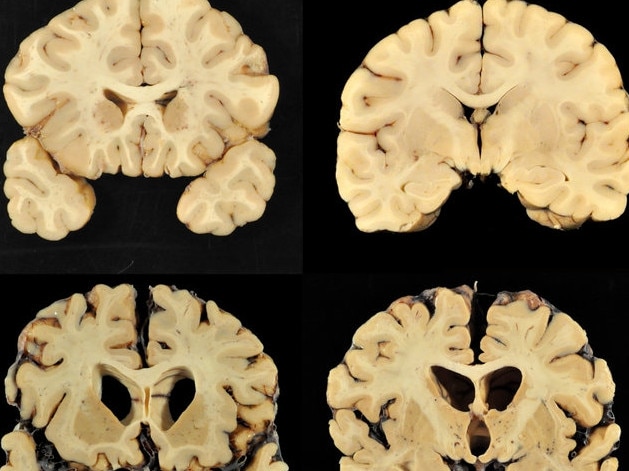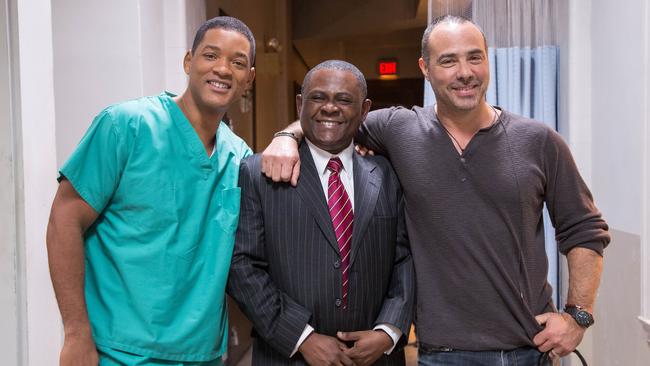NRL concussion shock: CTE found in brains of two former players
Peter Sterling will donate his brain for research as it is revealed that evidence of Chronic Traumatic Encephalopathy has been found in the brains of two deceased NRL players.
NRL
Don't miss out on the headlines from NRL. Followed categories will be added to My News.
Rugby league legend Peter Sterling will donate his brain for research such is his concern that the impact of playing the sport during one of its roughest eras could have had lasting consequences.
Sterling, who won four premierships with the Parramatta Eels and starred for both the Blues and Australia, said the decision to donate his brain was not one taken lightly.
Sterling was speaking on Macquarie Sports Radio after the release of a report that found a brain disease linked with repetitive head trauma in the NFL has been identified for the first time in the brains of two former NRL players.
“I wouldn't say I’m scared, I would say concerned is the word. I know my memory is not what it was ten years go, whether that’s the fact that I’m getting close to 60 and that is just the way nature takes its course,” Sterling said,
LISTEN! In an interview with Macquaries Sports Radio Peter Sterling reveals his concerns around brain trauma suffered during his playing days.
“I cannot recall ever being knocked out in a game, I don’t think I suffered serious bouts of concussion, but I played over 220 games of first grade football and a fair bit of rep football and there was lot of wear and tear involved in that.
“I’m not scared but I’m concerned and the decision to donate the brain was not one that was taken lightly but I think its important that something like that can help so that we know more and we can take the appropriate steps as that knowledge becomes more readily available.”
The landmark and potentially game-changing findings released today have been uncovered by researchers and clinicians from Royal Prince Alfred Hospital, NSW Health Pathology and the University of Sydney’s Brain and Mind Centre.
Evidence of Chronic Traumatic Encephalopathy, or CTE, was found in the two brains of deceased NRL players, both of whom played more than 150 first-grade games.

The findings related to rugby league have been published today in the international neuropathology journal Acta Neuropathologica Communications.
“The changes in the two brains were distinctive, definitive, and met consensus diagnostic criteria for CTE,” said lead author Clinical Associate Professor Michael Buckland, head of the RPA Neuropathology Department and head of the Molecular Neuropathology Program at the Brain and Mind Centre.
MORE COVERAGE
NRL stars in groundbreaking concussion study
Why league hard man decided to seek help
Former NRL player offers his brain to science
“I have looked at about 1000 brains over the last 10 years, and I have not seen this sort of pathology in any other case before.
“The fact that we have now seen these changes in former rugby league players indicates that they, and likely other Australian collision sports players, are not immune to CTE, a disease that has gained such high profile in the United States.”
The identity of both players is unknown. The journal claims that they are the two first reported cases of CTE in rugby league in the world and only the second and third cases of CTE ever reported in Australian sport.
The journal states that Case 1 had a successful career after retirement, and had been working up until his death.
He did not abuse alcohol, or other drugs.

Family members reported increasing reliance on aide-mémoires for daily activities in the years prior to his death, and recent difficulties remembering details of a significant life event.
Case Two had some issues during his transition to a post-playing career, but was productively employed until his death.
CTE was first discovered in the US by Doctor Bennet Omalu during an autopsy of former Pittsburgh Steelers centre Mike Webster in 2002.

The diagnosis — and the strong denials from the NFL that the disease was connected to the sport — were chronicled in the 2015 movie “Concussion.”
Dr Christopher Nowinski, who has worked with Doctor Omalu in the US and is the head of the Concussion Legacy Foundation in Boston, said: “We commend the authors for this groundbreaking discovery.
LISTEN! In a special one-on-one interview Matty sits down with Sam Burgess to talk through the highs and lows of his career, his desire to play at Manly and his venture into rugby union.
“We hope the first proof of CTE in rugby league inspires the Australian scientific community to mobilise in the fight against CTE, and advances the conversation on reforms to sport that can prevent this disease.”
The NRL have spent the past five years consistently reviewing, tightening and reassessing their concussion protocols.
Originally published as NRL concussion shock: CTE found in brains of two former players



